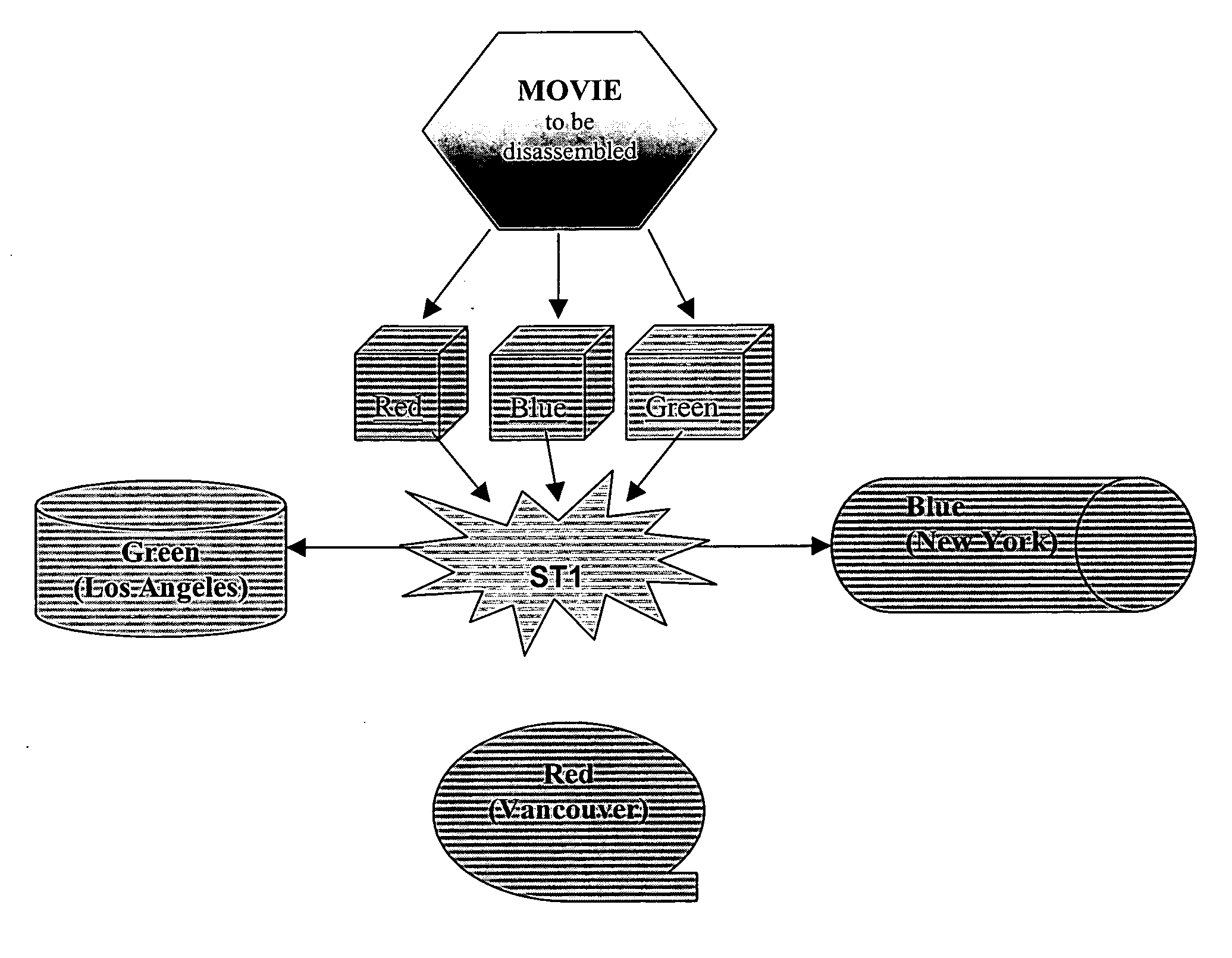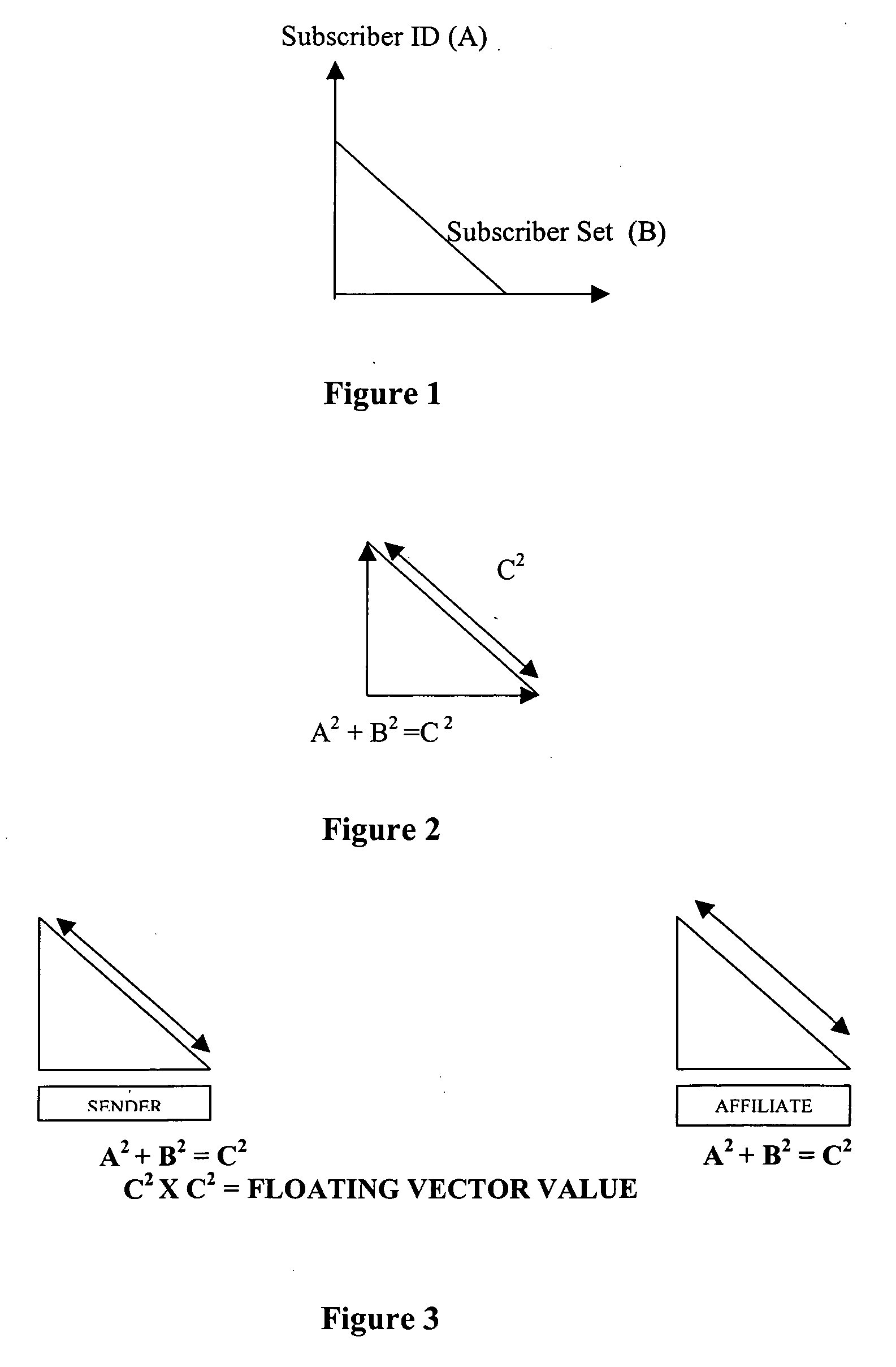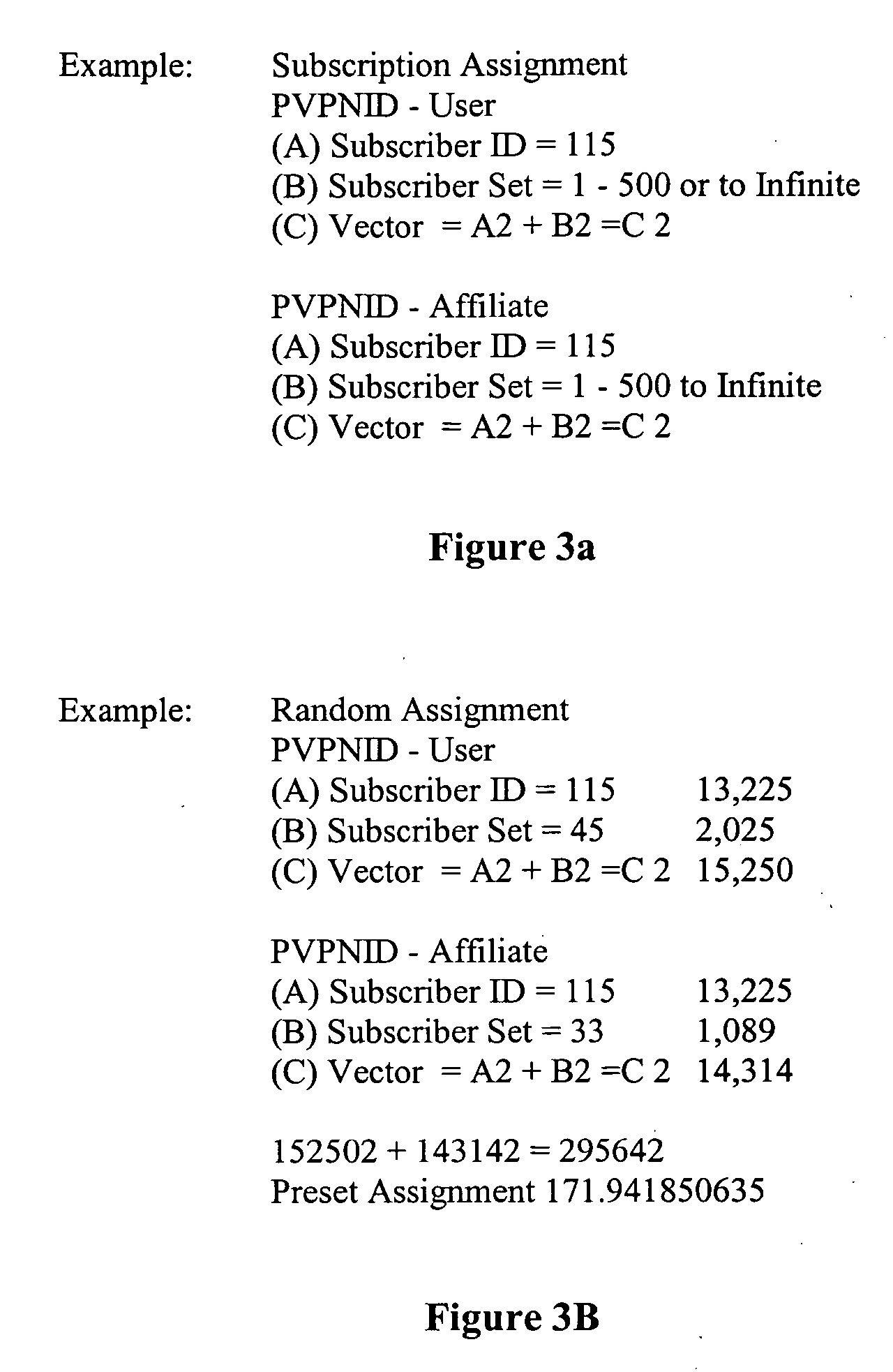Dispersed data storage using cryptographic scrambling
a cryptographic scrambling and data storage technology, applied in the field of cryptography, can solve the problems of public key based encryption standards, intrinsic weak points of public key systems, and difficult or perhaps even impossible attacks
- Summary
- Abstract
- Description
- Claims
- Application Information
AI Technical Summary
Benefits of technology
Problems solved by technology
Method used
Image
Examples
based embodiment
[0051] D. Subscription Based Embodiment
[0052] In preferred embodiments, ST1 scrambled data will only unscramble to a distinct identity. Consequently, communications within an ST1-based environment cannot occur between two parties unless one user is subscribed to another user's platform.
[0053] Accordingly, ST1-scrambled content cannot be accessed unless an ST1 communications platform is set up between the content creator and recipient. As a point of fact, a content creator would use ST1 to establish a communications platform between himself and his content—he would “subscribe himself” to his content. In other words, access to digital content also becomes subscription-based once ST1 has been used to scramble that content.
[0054] Because it is inherently a personalized scrambling technology, ST1 provides a subscription-based platform model that facilitates “pay-per-play” transactions in a B2B environment. Therefore, ST1 not only provides security, it also opens up personalized one-to-...
case 1
[0118] Mime Protecting the Film Industry Via SPDOF
[0119] A movie media object would be fragmented into its Red Green Blue (RGB) elements via RGB Channel Splitting. Each separate element is then securely personalized through the ST1 engine. The media can now be distributed safely over any open network to three separate hosts. In this case, ST1 functions comparably to STDM and dynamically utilizes encryption algorithms that are randomly assigned to data packets as the packets are scrambled (based on each content creator's personalized ST1 platform). These three hosts can be located anywhere in the world (wherever such server co-location services are provided). All objects would be placed back together sequentially.
case 2
[0120] Protecting the Music Industry Via SPDOF
[0121] A music media object could be put through three frequency-sampling processes, or perhaps one Fast Fourier Transform process where it would be split into three streams for co-location. For example, a 512 pole FFT can take a sampling of frequencies and divide by 512 giving the bandwidth of each pole. You could split 256 into three groups: send 0-64 for a low-pass filter; 65-128 for a band-pass filter; and 129-256 as a high-pass filter. Again, all objects would be placed back together sequentially. Here ST1 functions like Frequency Division Multiplexing (FDM), i.e., “This packet belongs to this frequency using this algorithm at that time.”
PUM
 Login to View More
Login to View More Abstract
Description
Claims
Application Information
 Login to View More
Login to View More - R&D
- Intellectual Property
- Life Sciences
- Materials
- Tech Scout
- Unparalleled Data Quality
- Higher Quality Content
- 60% Fewer Hallucinations
Browse by: Latest US Patents, China's latest patents, Technical Efficacy Thesaurus, Application Domain, Technology Topic, Popular Technical Reports.
© 2025 PatSnap. All rights reserved.Legal|Privacy policy|Modern Slavery Act Transparency Statement|Sitemap|About US| Contact US: help@patsnap.com



